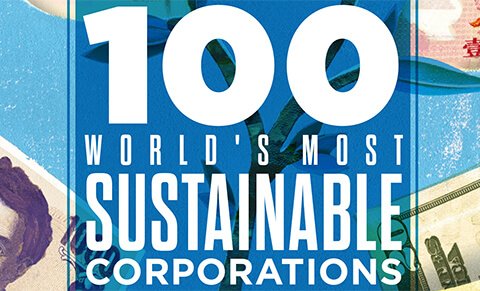In late 2015, the United Nations adopted a set of aspirations for the world to realize by 2030, calling them the Sustainable Development Goals (SDGs). To the cynic, they read as just another set of UN promises that are destined to sit on a dusty shelf somewhere.
These 17 goals, however, are just the headlines to a detailed framework with 169 measurable targets for each member country to reach. The targets are designed to make it feasible and realistic for entities such as states and companies to work out strategies towards achieving the goals.
The SDGs’ predecessors, the Millennium Development Goals, were mostly seen as a way for charities and well-meaning Western governments to measure the effectiveness of aid, but the SDGs are aimed at quite a different audience. For one thing, they’re not just targeted at developing countries.
The underlying goals and analysis make it clear they offer a structure for all countries and businesses to think about how to align their future – whether in policy terms or business strategy – with the goals to create a more sustainably prosperous world.
They have come at a propitious time; it is generally agreed that the Paris Agreement on carbon emissions hammered out at COP21 started a tectonic change in private sector attitudes towards climate change (goal #13).
Senior business leaders are starting to recognize the risks of doing nothing and the opportunities for new business. Unilever’s chief executive Paul Polman pointed out in a speech last year the symbiotic relationship between the SDGs and company strategy.
“We know that the SDGs cannot be achieved without business,” he said. “At the same time, business cannot thrive or survive long term without the SDGs. After all, there is no business case in enduring poverty and climate change.”
According to a report from the Business and Sustainable Development Commission, authored by Polman and Mark Malloch Brown, focusing on the SDGs could open up $12 trillion (U.S.) of market opportunities in four key economic systems. These are food and agriculture, cities, energy and materials, and health and well-being. They represent around 60 per cent of the real economy and are critical to delivering the SDGs.
Slowly, companies are beginning to see the advantages of reporting on their contribution to achieving the goals – 2018 will see the second opportunity for this progress to appear in annual reports.
Investors are already taking note. Sarah Norris of Aberdeen Standard Investments runs the Global Equity Impact Fund, which uses a methodology based on the SDGs to select the best-performing companies in both financial and sustainability terms.
“We are seeing more and more companies strategically aligning themselves with the SDGs,” says Norris. “We’re encouraging them to use the goals as a framework for reporting.”
She warns, however, that some companies are talking the talk without walking the walk. “There is an issue with what I call ‘impact-washing’; that’s using the language of the SDGs without actually making any changes. If a company claims allegiance to the goals, they should be able to report on the outcomes of their commitment.”
For some companies, reporting on their contribution to the SDGs is just a new way to talk about their business – renewable energy companies, for example, are by their very existence contributing to climate change mitigation.
Others are seeing opportunities to “reapply the technology they have in a more creative, innovative manner,” says Norris. Even sectors that might not obviously leap to mind as bastions of sustainability can use the SDG framework to shape and change their business.
Norris cites the example of Belgian materials technology and recycling group Umicore, which is participating in what she calls “the circular economy,” recycling and repurposing obsolete electronics to create new products. Umicore is not just building individual sustainable business lines – it has applied the philosophy of the SDGs across its businesses.
Umicore claims to be the first company in the world to have developed a sustainable procurement framework for cobalt. Cobalt is used in many applications, notably rechargeable batteries for electric cars, but its main deposits are found in challenging regions such as Central Africa. Ensuring it is sustainably sourced requires attention to the environmental impact of extraction, but also the social impact. Forced labour, poor health and safety conditions, child labour and corruption are all challenges for cobalt sourcing.
Umicore offers one model for how companies can integrate the SDGs into their company strategy. It has identified the three areas where it can make the most material difference (resource scarcity, clean air and vehicle electrification). It has also outlined policies to improve sustainability in its supply chain as well as in the products and services it offers. And it sees these policies as the foundation for doubling its profits in the six years to 2020.
Canadian agribusiness company Agrium (now named Nutrien after a competing a merger with PotashCorp earlier this month) has similarly emphasized eight SDGs where the company has the greatest potential impact. While these efforts are focused on helping growers increase yields to address food needs and increase prosperity, the ripple effects for farmers, especially smallholder farmers, are seen as leading to educational and health care gains, along with greater gender equity and access to clean water.
Other companies have explicitly emphasized the holistic and interconnected nature of the SDGs. Ericsson, for example, has assigned a different senior team member as a champion for each individual goal.
Last October, Maryland-based spice and flavourings company McCormick & Company released its Purpose-led Performance framework, retooling its previous corporate social responsibility efforts around three pillars: people, communities and planet. A series of commitments and clear performance targets out to 2025 were made, tied explicitly to one or more of the SDGs. Only four SDGs were left off the list.
While these efforts seem admirable, Bhaskar Chakravorti, senior associate dean of international business and finance at the Fletcher School at Tufts University, recommends a different approach. He suggests a “dispersion of efforts is not advisable, as it tends to splinter resources, delink the SDG investments from company strategy and have the paradoxical effect of making orphans out of all the SDGs because none gets the sustained strategic investments needed.”
Chakravorti, who is also the founding executive director of Fletcher’s Institute for Business in the Global Context, prescribes segmenting the goals to understand which of them is most relevant to the business, identifying which goals intersect with the company or its activities. These are the places where the company can have meaningful impact, he says.
Finally, Chakravorti calls for companies to make the business case for the strategy: This may be that there is a business opportunity; it may be about risk management, even reputational risk; it may be about shifting the company strategic horizon to the longer term, when climate change might threaten the profitability of the company.
Although companies globally have been slow to take on the SDGs as part of their corporate strategy, there are hot spots of progress. In Europe, governments have been faster to lead through regulation. In France, companies over a certain size are required to report how their business is aligned with the aim of limiting climate change to 2 C, for example.
The challenge for companies and the investors hoping to select stocks based on their commitment to the SDGs is that there is no standardized reporting framework as yet.
“Companies don’t know what information they should be reporting, because there’s no gold standard,” says Norris of Aberdeen Standard. Although the Global Reporting Initiative, which was set up 20 years ago to promote standardized reporting on sustainability issues, could offer some guidance, Norris feels it “is not fit for purpose any more” given the new framework of the SDGs.
There are numerous organizations offering support to companies wanting to use the SDGs to mold and improve their businesses. KPMG created the SDG Industry Matrix, identifying how different industries could contribute and what companies are already doing in these areas. The Business and Sustainable Development Commission was launched in 2016 at the World Economic Forum to help companies reap the economic rewards inherent in the SDGs.
The Global Compact, set up by the UN in 2000 to support business in adopting sustainable practices, has fully integrated the SDGs into its language. Local chapters such as Global Compact Canada are also working to encourage member companies to realign their business operations around the SDGs.
Two years into the 15-year period to attain the SDGs, a huge amount remains to be done. But companies are beginning to see the goals as opportunities to rethink their business.
Click here to go back to the ranking landing page.






